Travertine Stone Countertops: A Complete Guide
Table of Contents
Toggle- Travertine Stone Countertops: A Complete Guide
- What is Travertine Stone?
- Benefits of Travertine Stone Countertops
- Travertine Countertop Cost
- Maintenance Tips for Travertine Countertops
- Travertine Countertops in Different Areas of the Home (Travertine Countertops Benefits & Maintenance)
- Pros and Cons of Travertine Countertops (Travertine countertop pros and cons)
- Is Travertine the Right Choice for Your Home?
- Travertine Countertops vs Granite
- Travertine vs Marble Countertops
- Travertine Countertop Sealer
- Travertine Countertop Care Tips
- Conclusion
Travertine stone countertops offer a timeless and elegant option for your home. Known for its natural beauty, durability, and unique texture, travertine has been a popular choice in luxury homes and kitchens for centuries, such as the travertine kitchen countertops. In this article, we will explore the benefits, costs, and maintenance tips for travertine countertops, helping you decide if it’s the right material for your next home project.
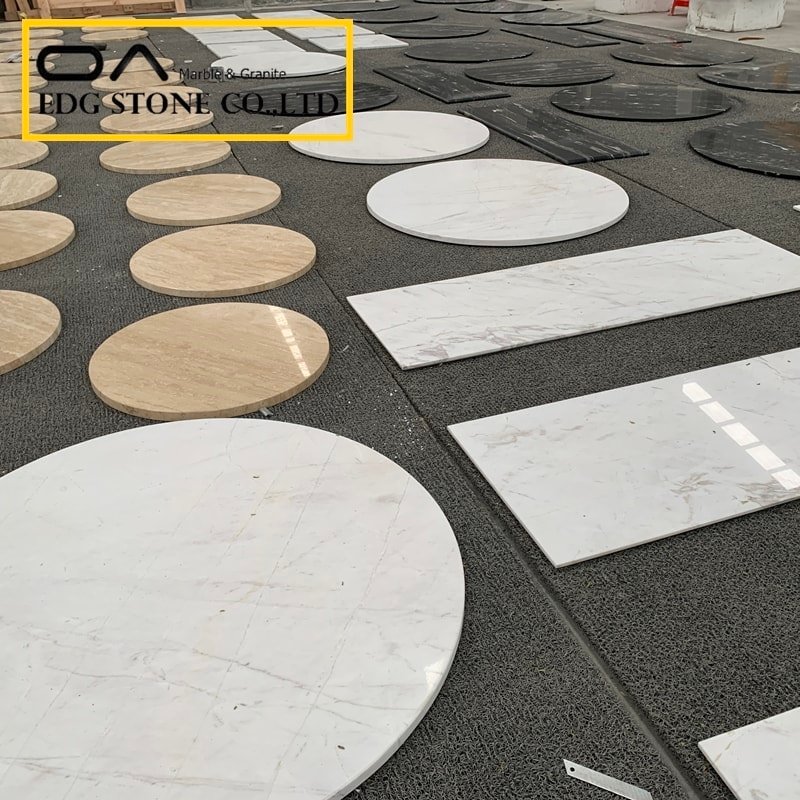

What is Travertine Stone?
Travertine is a type of limestone that forms in natural springs or caves, primarily composed of calcium carbonate. It is characterized by its porous surface, which can have small holes and crevices. These natural features give travertine its unique texture, making it a standout material in both contemporary and traditional designs.
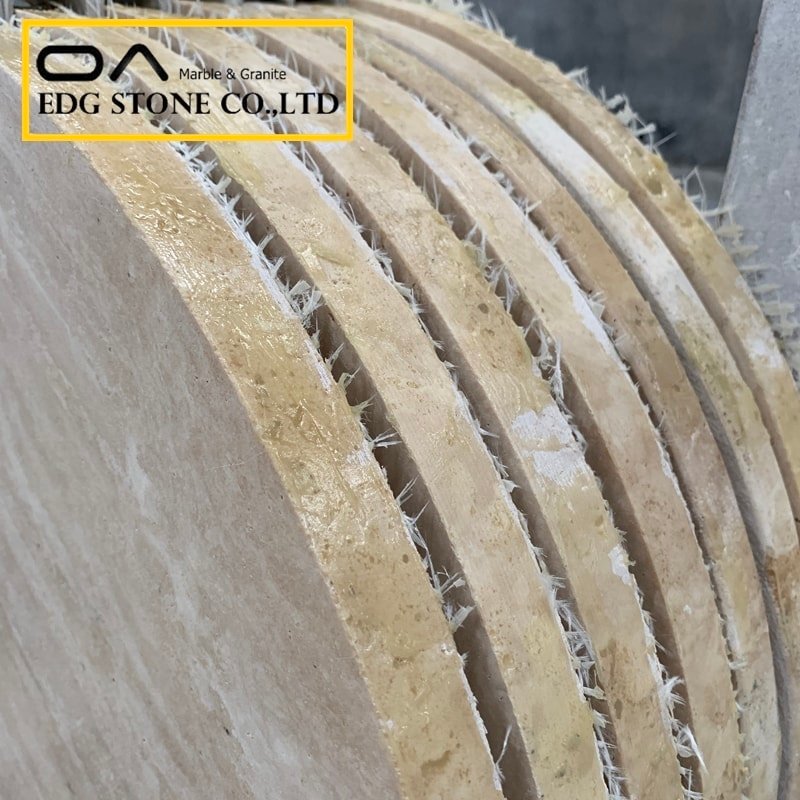
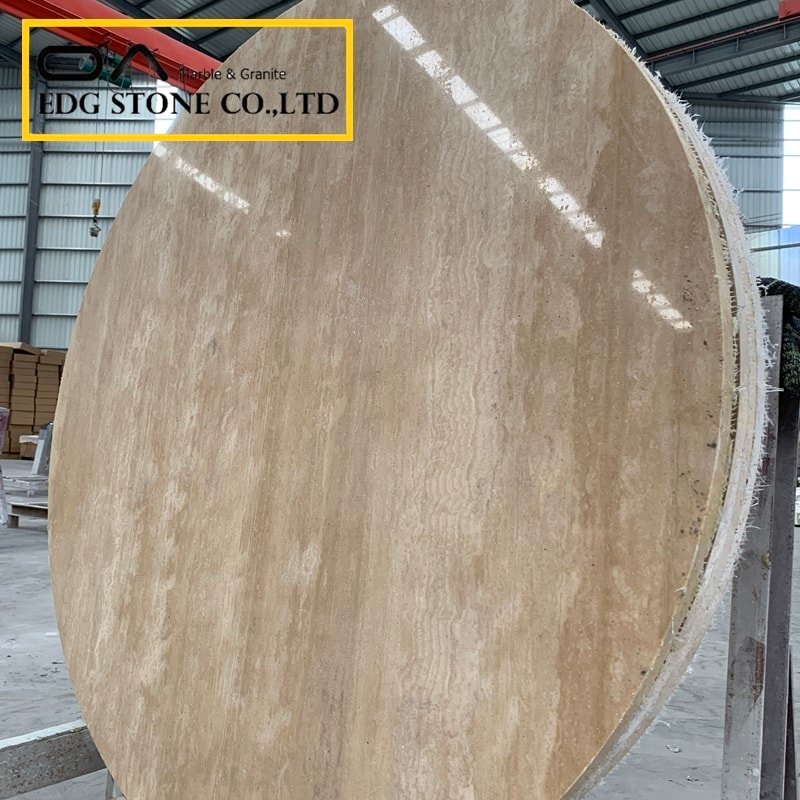
Benefits of Travertine Stone Countertops
Natural Beauty and Versatility
Travertine countertops have a warm, earthy appearance with shades ranging from beige to gold and brown. The natural veining and patterns make each piece unique. Whether used in a modern kitchen or rustic bathroom, travertine complements various design styles.Durability
Travertine is a relatively durable material that can withstand everyday wear and tear. While it is softer than granite or quartz, it is still strong enough for kitchen countertops, bathroom vanities, and even outdoor applications.Affordability
Compared to other natural stones like marble or granite, travertine is often more affordable, making it an attractive option for those on a budget. Its cost-effectiveness, combined with its aesthetic appeal, has made it a popular choice for homeowners.Eco-Friendly
As a natural stone, travertine is environmentally friendly. It is sourced from quarries with sustainable practices, and its durability ensures that it will last for many years, reducing the need for replacements.
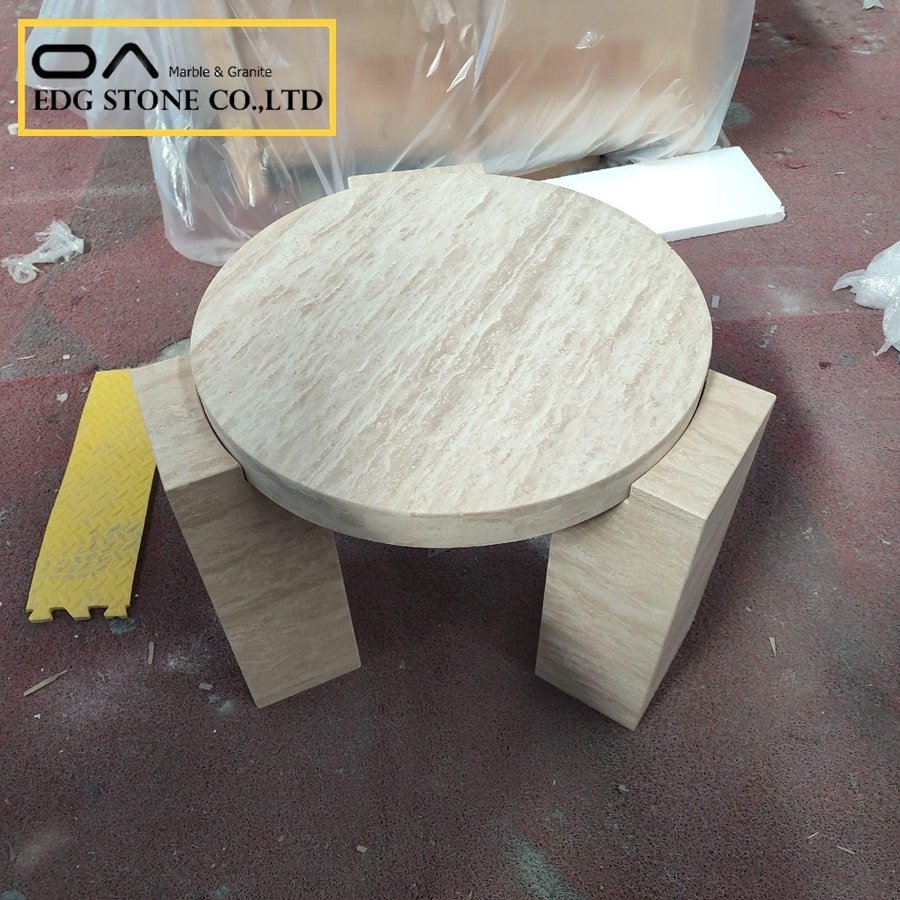
Travertine Countertop Cost
The cost of travertine countertops can vary depending on the quality of the stone, the thickness, and the complexity of the installation. On average, travertine countertops cost between $50 and $100 per square foot. Installation costs are additional, and the total price can increase depending on your location, countertop size, and any customizations required.
Factors Influencing Cost
Stone Grade: Higher-quality travertine with fewer imperfections will cost more.
Thickness: Thicker slabs or custom cuts can increase the cost.
Finish Type: Polished finishes are more expensive than honed or tumbled finishes.
Installation Complexity: Custom edges and intricate installations may raise labor costs.
Maintenance Tips for Travertine Countertops
Travertine countertops, like other natural stones, require proper care and maintenance to keep them looking their best.
Sealing
Travertine is porous, which means it can absorb liquids, causing stains and damage over time. It is essential to seal the surface regularly (every 1-3 years) to protect it from spills and stains.Cleaning
Clean travertine countertops with a mild, pH-balanced cleaner. Avoid harsh chemicals or acidic cleaners like vinegar, as they can damage the stone. For daily cleaning, a soft cloth and warm water are usually enough.Avoid Heat
Travertine is sensitive to heat, so it is important to use trivets or hot pads when placing hot pots or pans on the countertop. Direct heat can cause discoloration or even cracking.Prevent Scratches
While travertine is durable, it is still susceptible to scratches. To avoid damage, use cutting boards and avoid dragging heavy objects across the surface.Repairing Chips and Cracks
If your travertine countertop gets chipped or cracked, it can often be repaired by a professional. Using an epoxy resin designed for stone can also help seal small cracks.
Travertine Countertops in Different Areas of the Home (Travertine Countertops Benefits & Maintenance)
Travertine countertops can be used in various parts of the home, including:
Kitchens
With its neutral colors and rustic look, travertine is ideal for kitchen islands, counters, and backsplashes. The stone works well with both traditional and modern cabinetry.Bathrooms
Travertine countertops add elegance to bathroom vanities, creating a spa-like atmosphere. The material’s warm tones complement wood and ceramic fixtures.Outdoor Kitchens
Due to its ability to withstand different weather conditions, travertine is often used in outdoor kitchens and patios. It provides a durable and stylish surface for cooking and entertaining.
Pros and Cons of Travertine Countertops (Travertine countertop pros and cons)
Pros:
Beautiful, natural appearance with unique textures.
Affordable compared to other natural stone countertops.
Eco-friendly and durable with proper care.
Versatile for use in both indoor and outdoor spaces.
Cons:
Requires regular sealing due to its porous nature.
More prone to scratching and staining compared to granite or quartz.
It can be more expensive than synthetic materials like laminate or engineered stone.
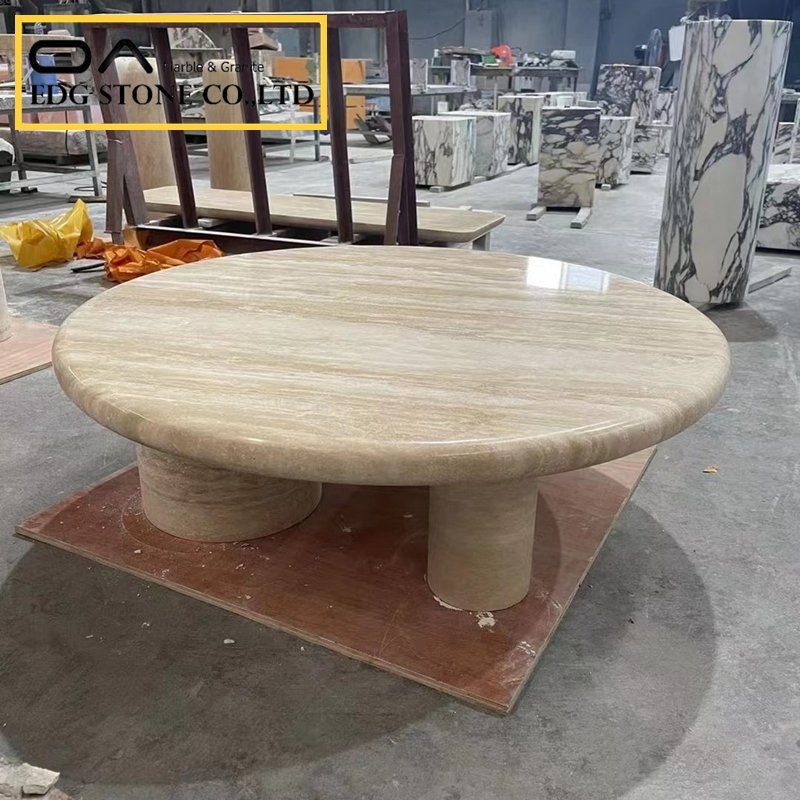
Is Travertine the Right Choice for Your Home?
If you’re looking for a beautiful, affordable, and natural material for your countertops, travertine may be the perfect option. While it does require some maintenance and care, its unique aesthetic and durability make it a great investment for many homeowners. Whether you choose travertine for your kitchen, bathroom, or outdoor space, it will undoubtedly add charm and value to your home.
Travertine Countertops vs Granite
When comparing travertine countertops to granite, homeowners often notice striking differences in durability, appearance, and maintenance needs. Travertine, a type of limestone, offers a warm, earthy look with natural pits and unique veining, making it ideal for rustic or Mediterranean-inspired kitchens and bathrooms. However, it is softer and more porous than granite, which means it requires frequent sealing and careful maintenance to resist staining or etching. Granite, on the other hand, is an igneous rock known for its hardness, scratch resistance, and ability to withstand high heat, making it a more practical choice for heavy-use areas. Its polished surface and wide range of colors—from sleek blacks to speckled neutrals—suit modern and traditional designs alike. Cost can also vary, with granite often being more expensive upfront but offering lower long-term maintenance. Ultimately, the choice comes down to balancing travertine’s charm with granite’s superior strength.
Travertine vs Marble Countertops
Travertine and marble countertops share similarities in their luxurious appearance, but they differ in texture, performance, and upkeep. Travertine features a matte finish with natural pores and earthy tones like beige, cream, and tan, lending a warm, rustic elegance to interiors. Marble, formed from limestone under heat and pressure, presents a smoother surface with striking veining, often in dramatic whites, grays, or deep hues, offering a more polished and timeless aesthetic. In terms of durability, marble is slightly harder than travertine, but both are vulnerable to scratching, staining, and etching from acidic substances. Maintenance is key for either option, as both require sealing and careful cleaning to maintain their beauty. Travertine is typically more affordable, making it appealing for budget-conscious homeowners, while marble is often associated with high-end luxury. Choosing between them depends on whether you prefer the organic charm of travertine or the refined elegance of marble.
Travertine Countertop Sealer
A travertine countertop sealer is essential to preserving the natural beauty and durability of this porous stone. Travertine’s surface contains numerous small pits and pores, which can easily absorb liquids, leading to stains and damage if left unprotected. Applying a high-quality penetrating sealer helps fill these pores, creating an invisible barrier that resists moisture, oils, and acidic substances. Sealers come in different finishes, from enhancing sealers that deepen the stone’s natural color to natural-look sealers that maintain its matte appearance. Most experts recommend resealing travertine countertops every six to twelve months, depending on usage and exposure to spills. Regular sealing not only extends the lifespan of the countertop but also makes daily cleaning much easier, as dirt and liquids remain on the surface instead of seeping in. Without proper sealing, travertine can lose its appeal quickly, making this step one of the most critical parts of long-term care.
Travertine Countertop Care Tips
Caring for travertine countertops requires consistent maintenance to preserve their natural beauty and protect against damage. First, always clean the surface with a pH-neutral stone cleaner or mild soap and warm water, avoiding acidic or abrasive cleaners that can etch the stone. Wipe spills immediately, especially wine, coffee, or citrus, as travertine is highly porous and prone to staining. Use cutting boards for food prep and trivets for hot pans to prevent scratches and thermal shock. Regularly reseal the surface every six to twelve months to maintain stain resistance and make cleaning easier. To address minor scratches or dull spots, consider professional polishing or refinishing to restore the stone’s smoothness. Daily habits, like using coasters under glasses and placing mats near sinks, also help minimize wear. With proper care and attention, travertine countertops can remain elegant and functional for years, adding timeless character to kitchens and bathrooms alike.
Conclusion
Travertine stone countertops offer a blend of natural beauty, practicality, and affordability. With the right care, they can provide a stunning surface for your home that lasts for years. By understanding the benefits, costs, and maintenance requirements, you can make an informed decision about whether travertine is the right material for your next renovation project.
